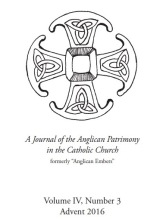Germany is a particularly painful example of the effects of secularisation on the organisation and life of the Catholic Church.
As I have reported before, the number of young people who still have a connection to the Church or the faith is now very small. It is fair to say that in the classes which I teach maybe half a dozen out of 20 to 30 still consider themselves believers and half of those are Muslims.
In the town of Rheine where I live we now have three parishes (one on the left of the river, one on the right and one in the surrounding villages), where we had five last year and fourteen in the not too distant past. The parish which I attend has two redundant churches, one of which is being transformed into a columbarium. Most of the surrounding towns (up to about 50,000 inhabitants) now have only one parish where they may have had three or four very recently and nearly all of the villages are part of one of the larger parishes in a neighbouring town.
Our daily newspaper today reported about a particularly sad example of a parish church in Immerath on the Lower Rhine, near the Dutch border.
 The beautiful neo-Romanesque village church of St. Lambert (known familiarly as the “Cathedral of Immerath”) is to be deconsecrated on 13th October 2013, when the bells will ring out over the village for the last time. The church building will then be demolished to make way for an open-cast coalfield.
The beautiful neo-Romanesque village church of St. Lambert (known familiarly as the “Cathedral of Immerath”) is to be deconsecrated on 13th October 2013, when the bells will ring out over the village for the last time. The church building will then be demolished to make way for an open-cast coalfield.
 The number of faithful at St. Lambert’s has dwindled to less than 60 and they are now moving to a small new chapel in a parish centre. In 2010 ten parishes were amalgamated to form one new parish.
The number of faithful at St. Lambert’s has dwindled to less than 60 and they are now moving to a small new chapel in a parish centre. In 2010 ten parishes were amalgamated to form one new parish.
The costs of maintaining the parish church were prohibitive and so when the offer came from the coal-mining company the parishioners seized at it.
Currently there is the atmosphere of an auction sale in the church. Bids are being made for altars, statues, pews, crosses, candlesticks, pulpit and after the 13th the decisions will begin to be made as to who the lucky new owners will be.
 Individual potential buyers are bidding on large life-size angel statues, which the sacristan herself would not put in her own bedroom: “I would get a shock every time I woke up”. A community of sisters in Bonn have put in a bid for twelve pews, a small village church in the region is after the organ, and so on. Anyone interested in acquiring any of the furnishings should contact the “Chapel Committee”.
Individual potential buyers are bidding on large life-size angel statues, which the sacristan herself would not put in her own bedroom: “I would get a shock every time I woke up”. A community of sisters in Bonn have put in a bid for twelve pews, a small village church in the region is after the organ, and so on. Anyone interested in acquiring any of the furnishings should contact the “Chapel Committee”.
Here is some of the beautiful 20th century stained glass (depicting St. Agatha, St. George and St. Nicholas):
My heart bled when I read the story this morning, and I wish I had the means to rescue some of the items myself (St. Agatha for St. Agatha’s, Portsmouth, for example!)


















David,
You wrote: As I have reported before, the number of young people who still have a connection to the Church or the faith is now very small. It is fair to say that in the classes which I teach maybe half a dozen out of 20 to 30 still consider themselves believers and half of those are Muslims.
This is the tragic consequence of the misplaced emphasis on indoctrination rather than faith formation — that is, placing the teaching of doctrine rather than development and nurturing of a personal relationship with our Lord — in many of our catechetical programs. In too many traditionally Catholic cultures, the sacraments of initiation (baptism, followed by first communion and confirmation, in whatever order and at whatever age) have been reduced to rites of passage devoid of real spiritual significance to which young people were admitted regardless of whether they really believed in the gospel of salvation or not. The litmus test of readiness to receive the sacraments should have been a frank discussion of a candidate’s personal experience of faith. Instead, in many places prior to the Second Vatican Council, it had been reduced to a test of each candidate’s knowledge of doctrine (often in the form of a candidate’s ability to parrot answers to questions that appeared in a catechism) and ability to recite prayers that appeared in various popular devotions from memory. And in many places, liberal leadership of the 1970’s and 1980’s replaced this with a candidate’s participation in various projects of social service that were at best tangential to spiritual life. But both missed the essence of Christian faith — and this is precisely what makes the “New Evangelism” initiated by Pope Benedict XVI so vital.
Here, I’m reminded of a comment frequently made by Evangelical Protestant Christians: “God does not have grandchildren. He only has children.” One does not become a true Christian, one does not attain salvation, because one’s parents have faith. Rather, this happens only by one’s own faith, and our programs of catechetical formation need to instill that faith.
You wrote: The beautiful neo-Romanesque village church of St. Lambert (known familiarly as the “Cathedral of Immerath”) is to be deconsecrated on 13th October 2013, when the bells will ring out over the village for the last time. The church building will then be demolished to make way for an open-cast coalfield.
The fact that the church building will be “relegated to profane use” is not shocking. A congregation of sixty does not need a building that can seat several hundred.
But, assuming that the building has not fallen into disrepair, the plans to level the building are utterly disturbing. One would expect that there would be another use for this magnificent edifice — perhaps as a place of worship for another Christian congregation or as a museum and concert hall. I’m astounded that a cultural commission or a commission for the preservation of the arts has not intervened to stop the destruction of the building.
But, perhaps the building has fallen into disrepair beyond the possibility of restoration due to the congregation’s lack of resources to maintain it properly, requiring its condemnation as a matter of public safety. This does not appear to be the case in the photos, but I don’t know that the photos are recent.
Norm.